If you type “Oman without a car” into Google, you’ll soon realize that just about every travel blog out there is saying the same thing – you need to rent a car to travel in Oman because there is no public transport.
Well, not me. However, the good news is that this is not true, and that with a bit of effort and research, solo travelers can see a lot of Oman’s beauty without a car, and without breaking the bank.
There is definitely intercity public transport in Oman catering to people who cannot drive or cannot afford a car. However, I also must emphasize that I am male. In an Islamic country that is both open-minded yet still very much conservative, my tips below might not work as well for female travelers. Experiences of female travelers might be somewhat different, and this will be flagged out wherever relevant.
Click HERE for public transport information in Muscat and HERE for 10 fascinating places you can go to using buses in Oman (wadi and desert included!)
Mwasalat Buses
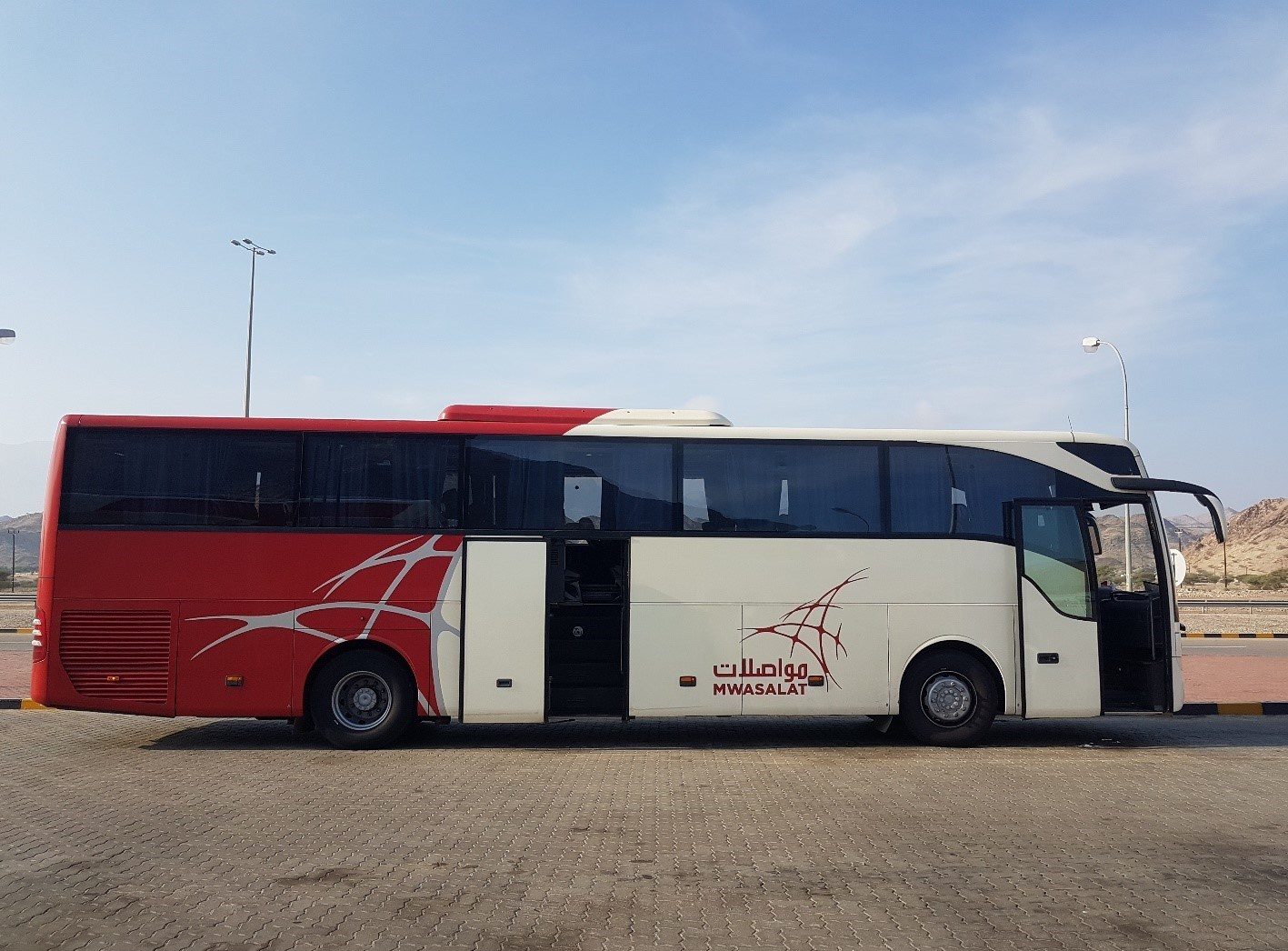
Mwasalat is Oman’s government-owned national bus transport company. If you travel by bus in Oman, this would be the most important company to note. They are large, 40-seater buses, instantly recognizable by their red and white liveries. Often well-maintained both inside and out, they are a fast, safe, comfortable, and affordable way to explore Oman beyond Muscat. Furthermore, they are air-conditioned and theoretically have WiFi on board. All seats on the newer MAN buses, which tend to ply the longer routes, also have USB charging outlets, but the slightly older Mercedes-Benz buses do not.
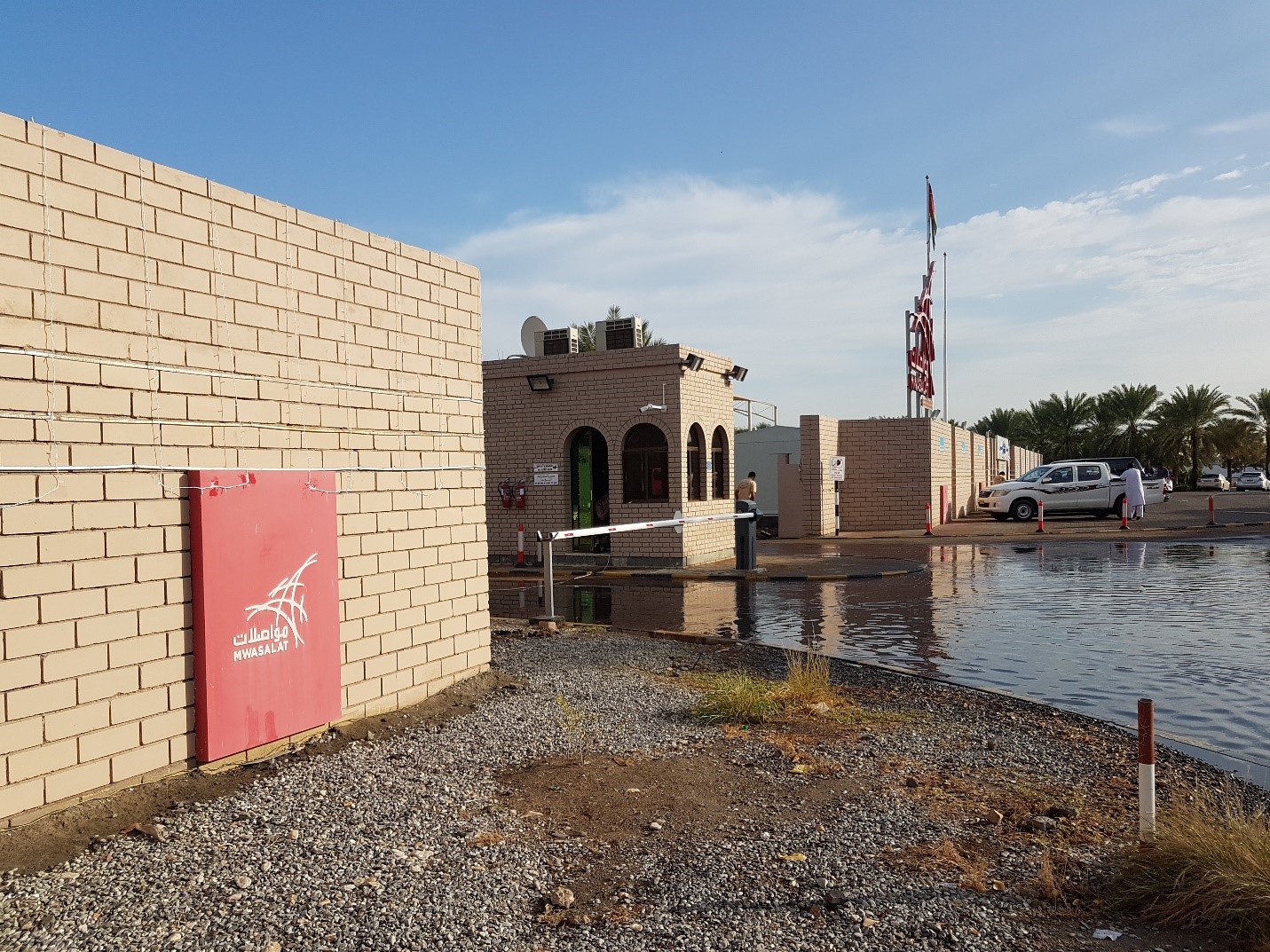
From Muscat, all Mwasalat intercity buses depart from Al Azaiba Bus Station, located in the west, between the Sultan Qaboos Grand Mosque and Muscat International Airport. The bus station itself is not a grand affair – there is an air-conditioned waiting area with a ticket counter, some power sockets, a TV, and a toilet, but not much else.
Depending on their routes, intercity buses also often make stops at Ruwi Bus Station, Muscat International Airport and Burj al Salwa, the latter being a messy transport hub on the outskirts of the city. If there is a ticket counter from where you’re boarding – basically Al Azaiba Bus Station, Ruwi Bus Station and Burj al Salwa – its best to buy your ticket beforehand, but there’s a chance that they will tell you to just buy your ticket directly from the driver.
It’s highly unlikely that the tickets will ever sell out, except on the long-distance Muscat-Salalah – from my experience, there’s always plenty of room for everyone on every other route.
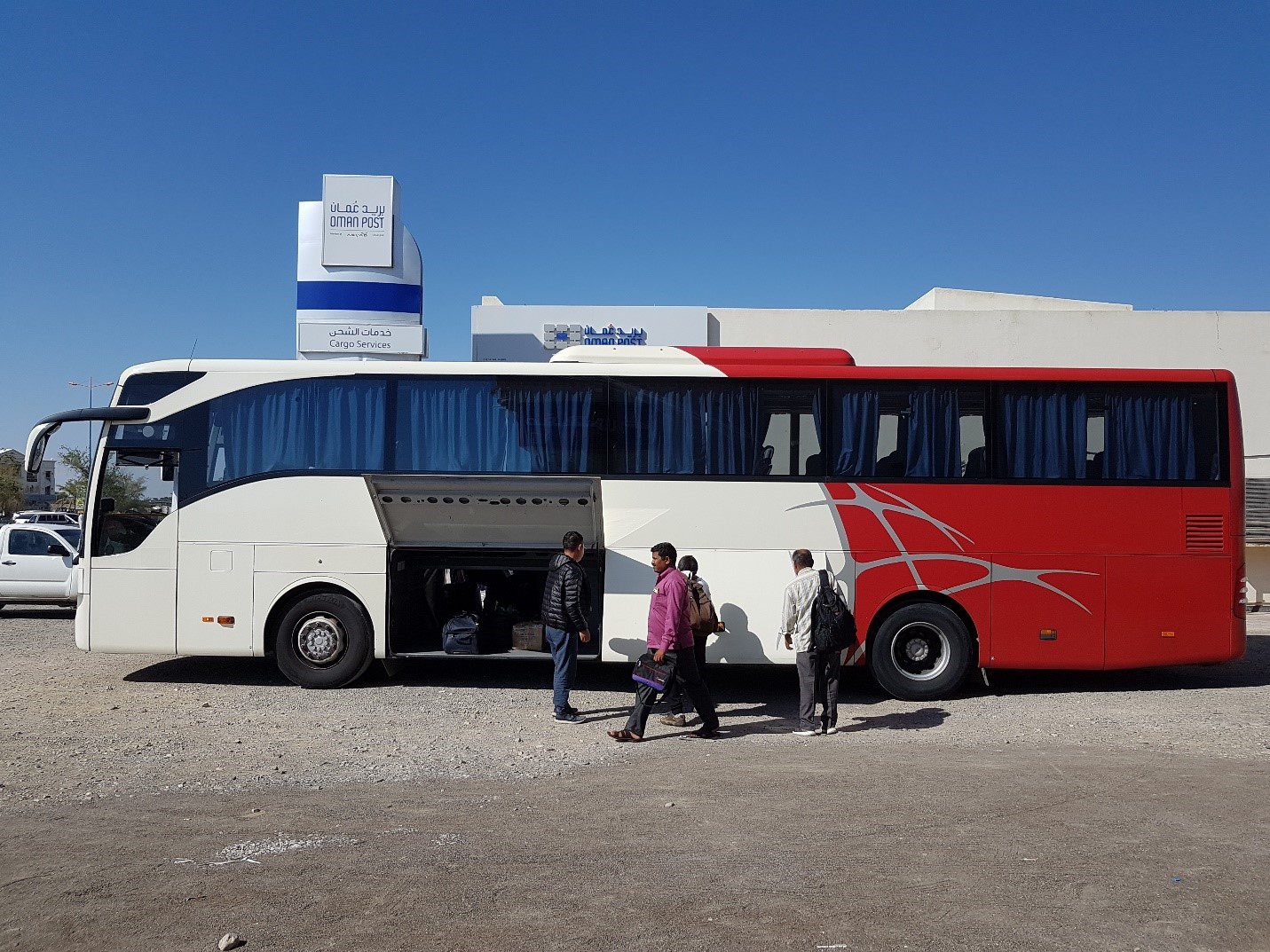
Outside of Muscat, buses tend to arrive and depart at the local Oman Post office, as they do in Ibri and Sur. In smaller towns, where there is no post office, the buses tend to zip past along the main road. Do not expect them to turn into town. While this happens in some places, like Nizwa and Mintrib, its rarely the case. Also, the bus driver might decide not to turn into town if he’s not in the mood, so it’s always better to wait along the main highway to flag it down. Roundabouts are also great landmarks flag the bus down.
If you’re not sure where exactly to catch the Mwasalat bus from, approach any South Asian man in the area. They will know better than the Omanis where to catch the bus from; virtually all Omanis drive and will have no clue about the public transport situation. The bus is largely utilized by the foreign workforce that cannot afford such luxuries and chances are, they know better where to wait for it. And don’t worry if people tell you that the bus isn’t running. If the timetable on the website says that it’s running, it most definitely is! Mwasalat buses are reliable!
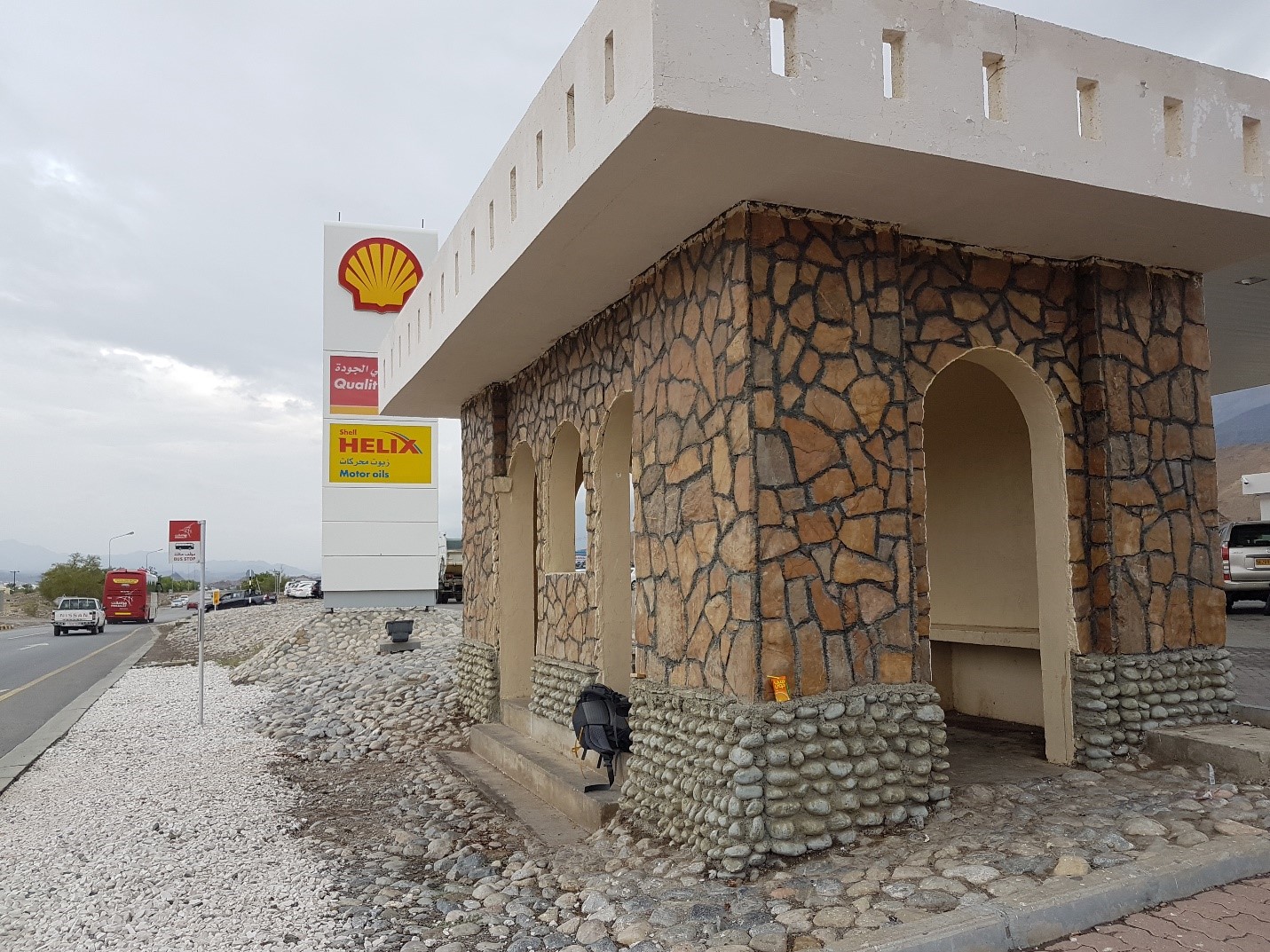
There are plenty of concrete multi-purpose shelters along the side of the road. These can act as bus shelters, but sometimes, there is only a bus pole with a bus logo. Flag the Mwasalat bus down early and dramatically, because once more, the driver does not have to stop if he’s not in the mood. Be prepared to be hurried on board!
As mentioned, buying bus tickets directly from the driver is always possible, but they can be quite temperamental. Only cash is accepted. While change is offered, the cash they have at hand is often limited, so do not give large bills to avoid problems. Drivers would write out a ticket for you, but there are occasions where the driver would collect the money and tell you to proceed without issuing you a ticket. Chances are that he didn’t overcharge you, but he’s basically pocketing the money for himself. There are no ticket conductors, so this won’t be a problem on your journey. On one occasion, the driver had even undercharged me when he kept the money for himself! This could soon be a thing of the past, as new cashless systems are being installed on all Mwasalat buses.
Prices are not expensive, and fares are prorated by distance. Generally, you do not have to buy the full fare of the journey, but some exceptions may apply, such as on the Muscat-Salalah route. In the unlikely situation that you are being overcharged, ask to see the distance/fare chart that all bus drivers carry with them. It might only be in Arabic, but at least the driver will realise that you’re not ignorant. You can also, in theory, buy a return ticket that is sometimes marginally cheaper than two one-way tickets, but I have never done so myself, nor has any driver ever asked me if I wanted a roundtrip ticket.
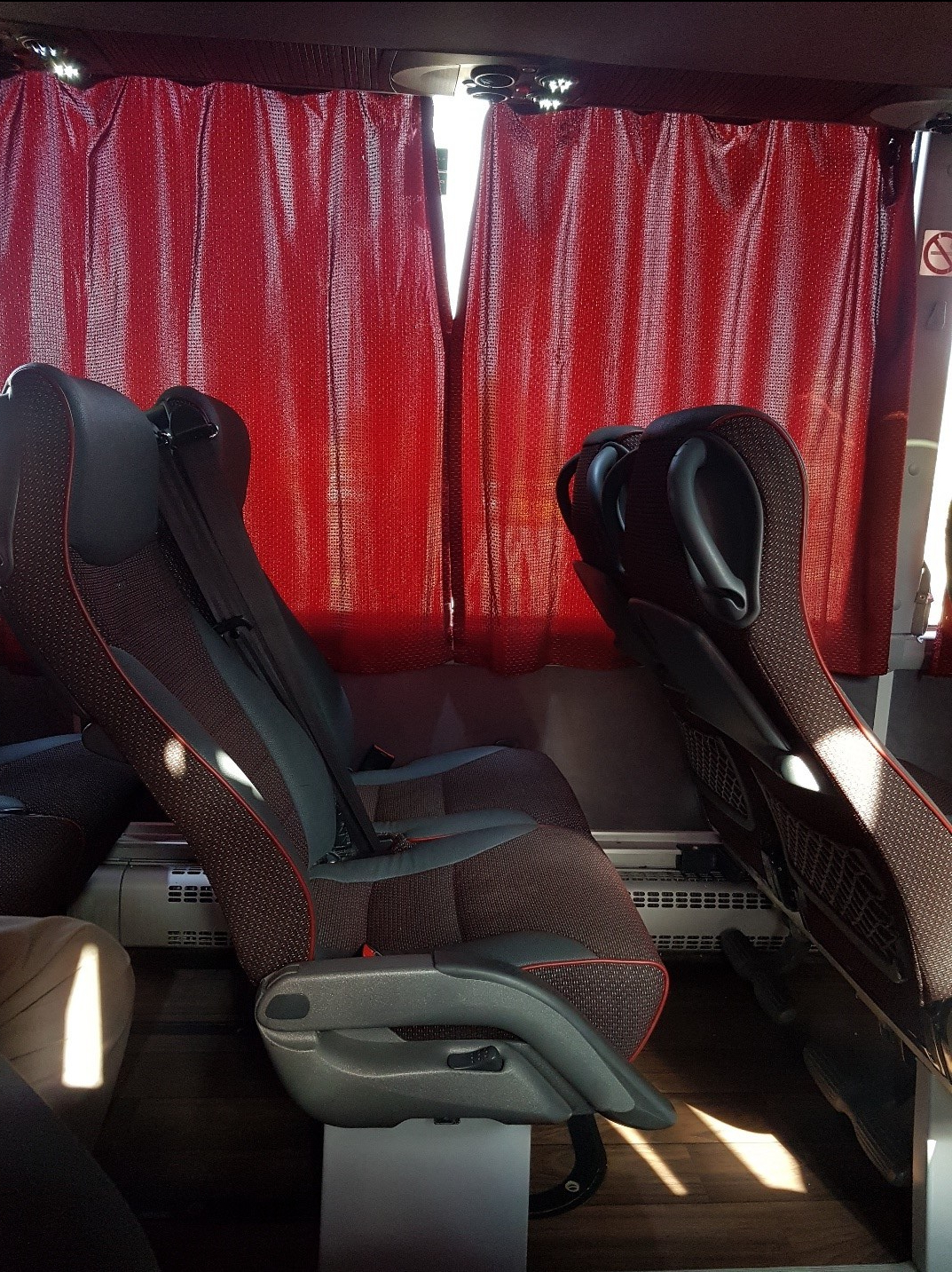
Once on board, women should be seated in the priority/family area in the front of the bus. It is culturally unacceptable for women to be seated further back in the bus. Couples and families can sit together at the front of the bus, but there should be no other circumstance under which a woman is seated with a man while on board a bus.
Mwasalat posts updated timetables on its website, and buses tend to depart Muscat punctually, but, from my experience, it is quite normal for a bus to run 10-20 minutes late as the journey progresses. This is not an excuse to arrive late at the bus stop, because there have been instances where buses arrive and depart a few minutes before schedule. It really depends!
Routes of Tourist Interest:
#36 Muscat – Jalan Bani Bu Ali via Ruwi, Quriyat, Tiwi (for Wadi Tiwi and Wadi Shab), Sur (Oman Post), and Al Kamil (1 daily, 7 hours, 3.500 OMR)
#41 Muscat – Buraimi (for Oman-UAE border) via Muscat International Airport, Barka and Sohar (3 daily, 5 hours, 4 OMR)
#43 Muscat – Shinas (for Musandam ferry link) via Muscat International Airport, Barka and Sohar (1-2 daily, 4 hours, 5.500 OMR)
#51 Muscat – Shannah (for Masirah ferry link) via Muscat International Airport and Sinaw (1 daily, 6 hours, 5.500 OMR)
#52 Muscat – Duqm via Muscat International Airport, Izki and Sinaw (1 daily, 7 hours, 5.500 OMR)
#53 Muscat – Buraimi (for Oman-UAE border) via Muscat International Airport, Izki, Birkat al Mawz, Nizwa, Bahla (Bahla Souq) and Ibri (Oman Post) (1 daily, 7 hours, 5 OMR)
#54 Muscat – Yanqul (Oman Post) via Muscat International Airport, Izki, Birkat al Mawz, Nizwa, Bahla (Bahla Souq), Ibri (Oman Post) and Al Dreez (for Bat beehive tombs) (1 daily, 6 hours, 4.400 OMR)
#55 Muscat – Sur (Oman Post) via Muscat International Airport, Ibra (Oman Post), Al Wasil (for Wahiba Sands), Mibtrib (for Wahiba Sands) and Al Kamil (1 daily, 5 hours, 4.200 OMR)
#100 Muscat – Salalah (Central Market) via Muscat International Airport, Izki, Haima and Thumrait (for Empty Quarter) (2 daily, 13 hours, 8 OMR)
#103 Muscat – Haima via Muscat International Airport, Izki, Sinaw and Duqm (1 daily, 10 hours, 6.500 OMR)
Mwasalat website: https://mwasalat.om/en-us/
Full Mwasalat Intercity Timetables: https://mwasalat.om/en-us/Services/Intercity-Outside-Muscat
Other Intercity Bus Companies
Other than the Mwasalat buses, there are also a few other companies that operate in Oman. Most of these only run between Muscat and Salalah, with a few also running from Muscat to Duqm.
These bus companies do not run from Al Azaiba Bus Station in Muscat. Instead, they each run from their respective bus company offices. Fortunately, in Muscat, they are all clustered together behind Ruwi Bus Station and in Salalah, they are not far from the Central Market. Again, South Asian expats will be able to give you directions. Most of these companies also make stops at Burj al Salwa, Farq (for Nizwa), Haima and Thumrait.
All of them charge less than the 8 OMR that Mwasalat charges. They are all generally clean, safe, fast and reliable, and some even offer free WiFi on board. Furthermore, they have departures more frequently than Mwasalat, making them a more practical option.
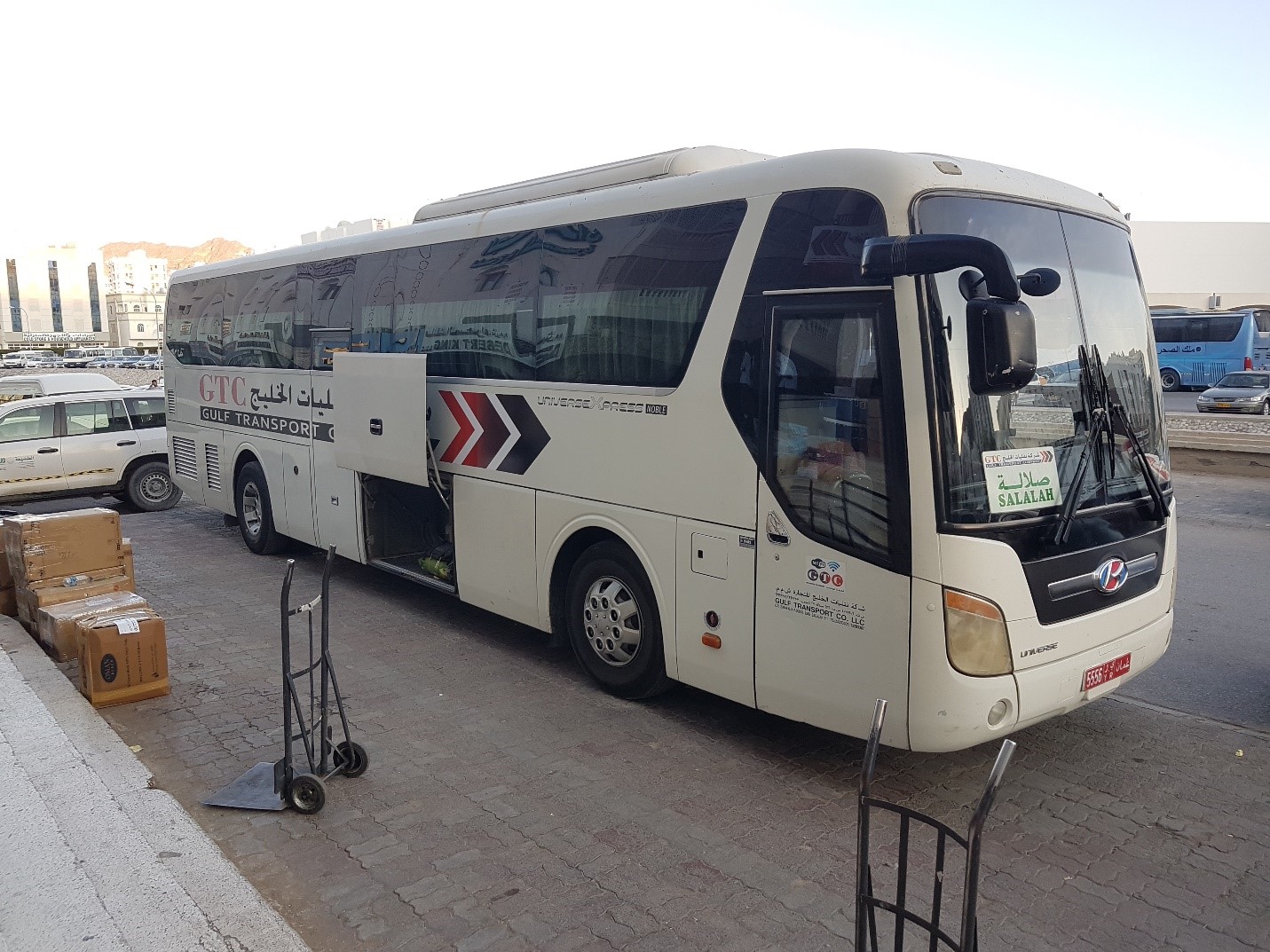
From Muscat to Salalah, I opted for the Gulf Transport Company (GTC), which charges 7OR for the 12 hour journey. The bus had a strong smell of disinfectant, and the onboard WiFi was good.

For my return journey from Salalah to Muscat, I paid 6OR with Gulf Line Transport (GLT). The bus was clean and the WiFi on board was also good.
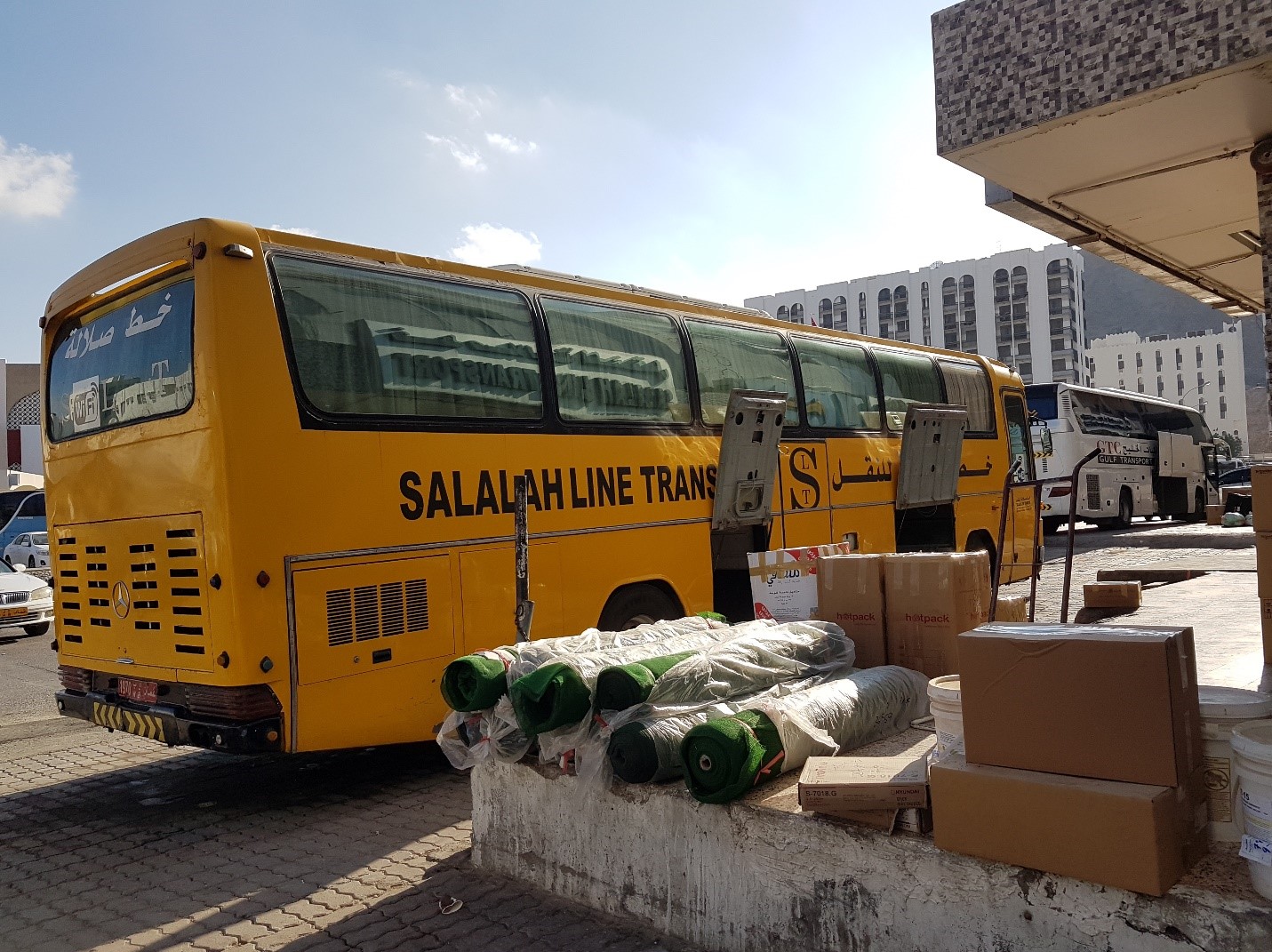
I did not use Salalah Line Transport (SLT), Al Ghazeel Transport Service (GTS) nor Happy Line Transport. Their buses are older, but their tickets tend to be on the more affordable end of the spectrum, charging 5 to 6OR per ticket.
None of these companies maintain a website with useful information.
Shared Taxis
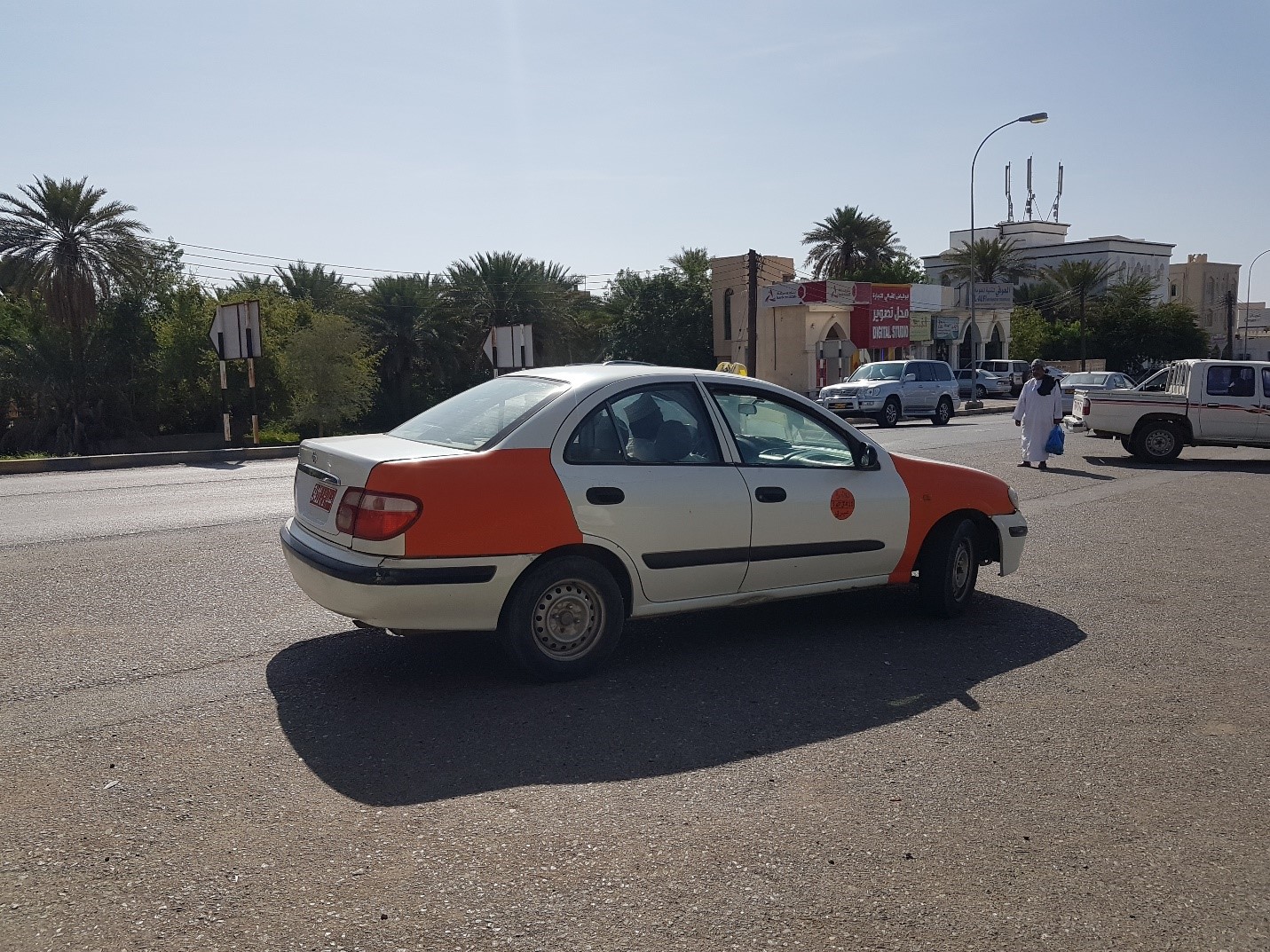
Before you decide to skip this section, you should know that shared taxis in Oman are very affordable, and that they are almost like an informal minivan system between smaller towns where demand is not high enough for big buses.
All taxis in Oman are very easily recognizable with their white and orange paintwork. Where there are no buses, shared taxis – known colloquially to both the foreigners and Omanis as “taxi same-same” – often meet the demand of passengers on smaller, less popular routes. Even on popular routes, shared taxis are a great alternative to the Mwasalat buses for journeys up to about 100km. Some people prefer them to the Mwasalat bus because they are faster and depart when they are full – just four passengers will do. However, some might not have the air-conditioning working, which is not going to be fun in the summer. They also cost slightly more than Mwasalat.
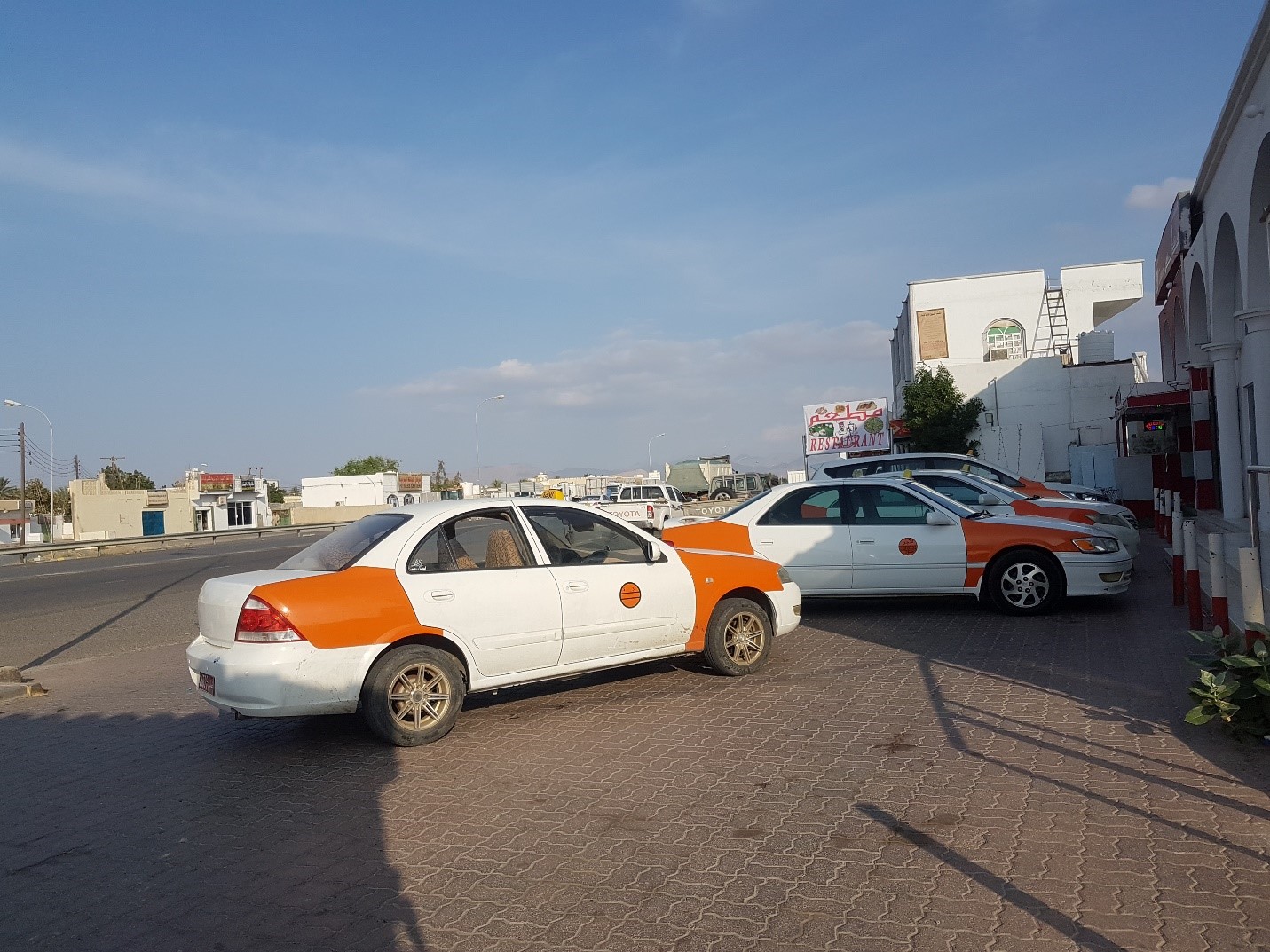
In many towns and cities, there are specific places to catch a shared taxi, such as a roundabout. The taxi drivers will point to you whether you are in the right area to catch a shared taxi to your given destination. Some drivers prefer to operate as shared taxis, while others would prefer operating private taxis, and they will point you to the driver who will take you on your trip. Drivers also seem to have a fixed route that they ply and would tell you who to approach if he does not drive that route.
All taxis in Oman are not metered, so you will have to negotiate a price with the driver before getting in. Assuming that there are four passengers in total, I have found that 1OR per 20km seems to be a fair price to pay, with every prorated increment being 500bz. You can also take short hops of just a few kilometres in shared taxis, in which case there is no minimum flag down fare. Prices for these can be as low as 100bz, but expect to be charged more as a tourist.
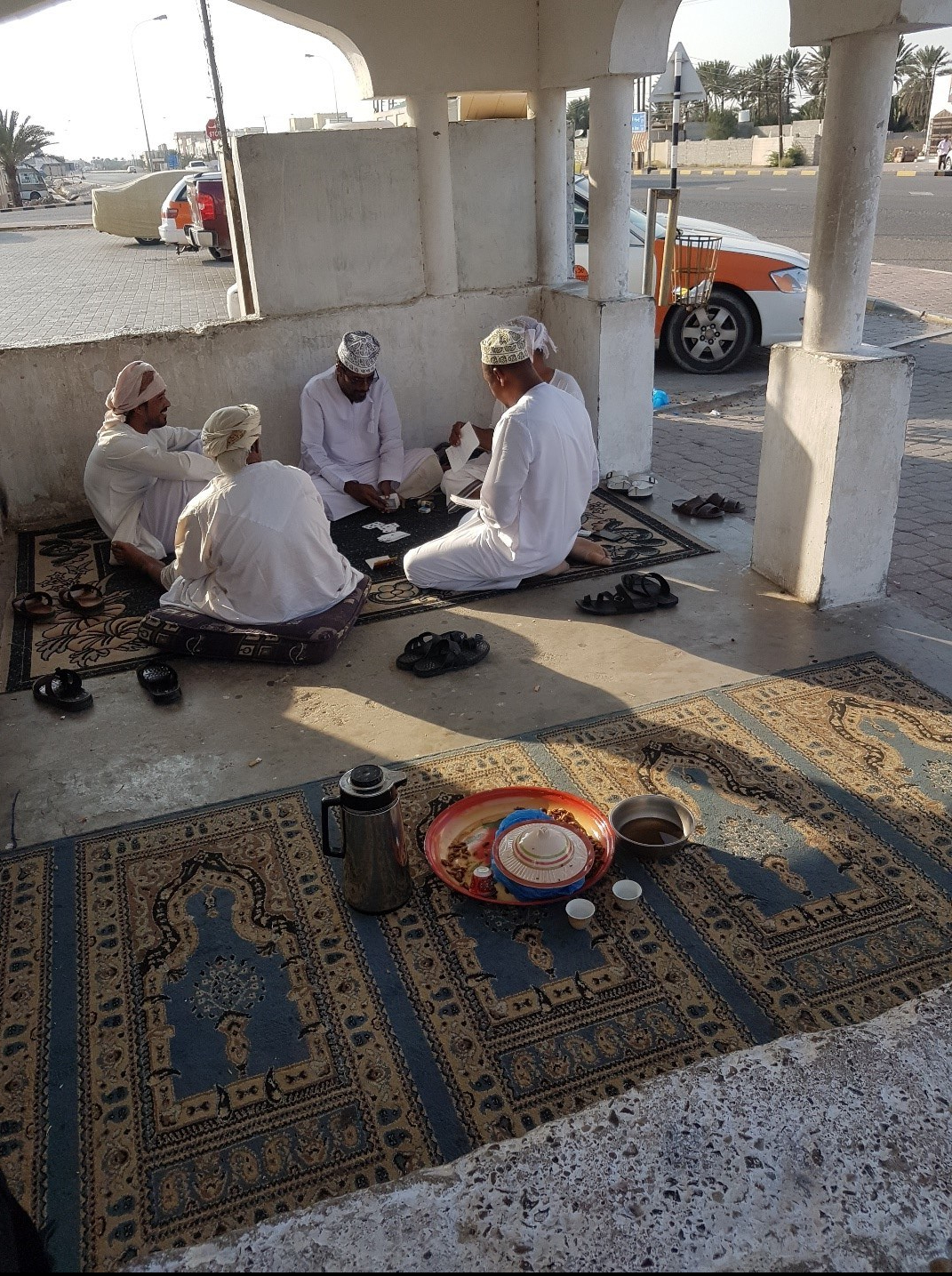
I have found the taxi drivers in Oman to be fairly honest. People would jump into the taxi without even confirming the price with the driver, only to alight and pay a reasonable amount for the trip. I also found myself being quoted a reasonable fare that I did not have to bargain on some occasions.
It’s easiest to find a shared taxi in the morning and evening, when people are getting to or from work. In the afternoon, particularly after the afternoon prayer, shared taxis are a bit hard to come by because there aren’t many people to share it with. It’s also possible to get a shared taxi after sunset, even as late as 10pm. This all depends on your route and your luck, but generally longer waits are expected.
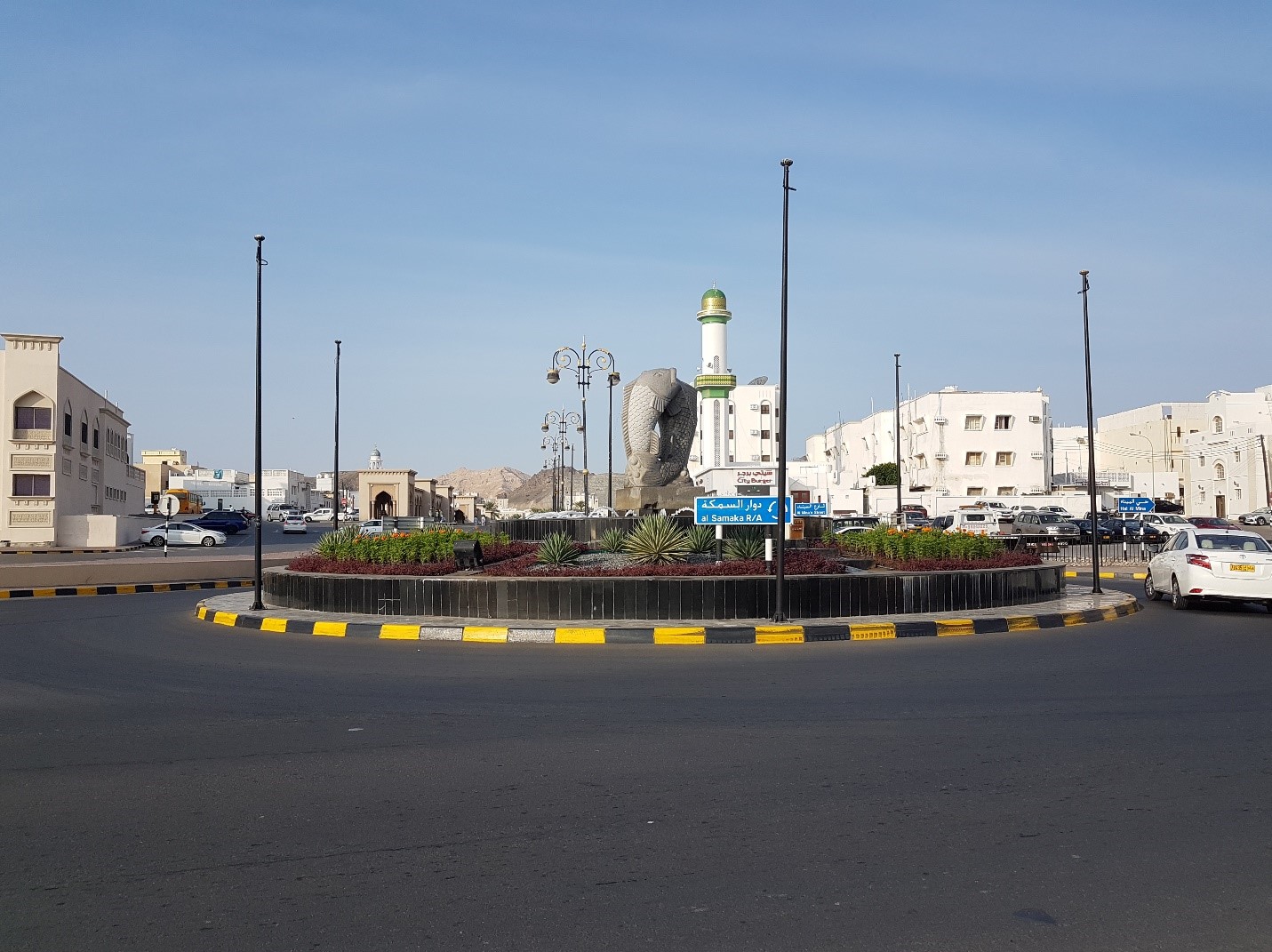
Telling your driver where you want to go can be tricky because addresses are tricky, there are not many landmarks, and because most taxi drivers outside of the big cities probably would not speak your language beyond just a few words. Forts, castles, markets, mosques, hypermarkets, petrol stations and large hotels tend to make great landmarks, but of course, be as specific with possible with the names so you don’t end up at the wrong place. Roundabouts also make great landmarks which your driver might recognise. From there, you can get another taxi should the driver not be going in your direction with less difficulty.
Female travelers, and couples, however, might not be able to use shared taxis. Most of the people who use shared taxis are South Asian expats, who are exclusively male. Likewise, most taxi drivers in Oman are also male. Therefore, as a woman, it would not be possible to sit in the front seat, next to the driver, nor in the backseat, next to the other male passengers. I have not seen any Omani women in shared taxis, so getting around could be a bit trickier.
Private Taxis

Private taxis look exactly the same as shared taxis, but are useful for larger groups, if you’re in a hurry, or if you want to go down a less populated road. They too, are not metered, so you would have to bargain for a reasonable price. If you’re not sure what a fair price to pay will be, you could download the OTaxi app, Oman’s version of Uber, to get an estimate before bargaining with the driver. Uber and other major ride-hailing apps not available in Oman.
Hitchhiking
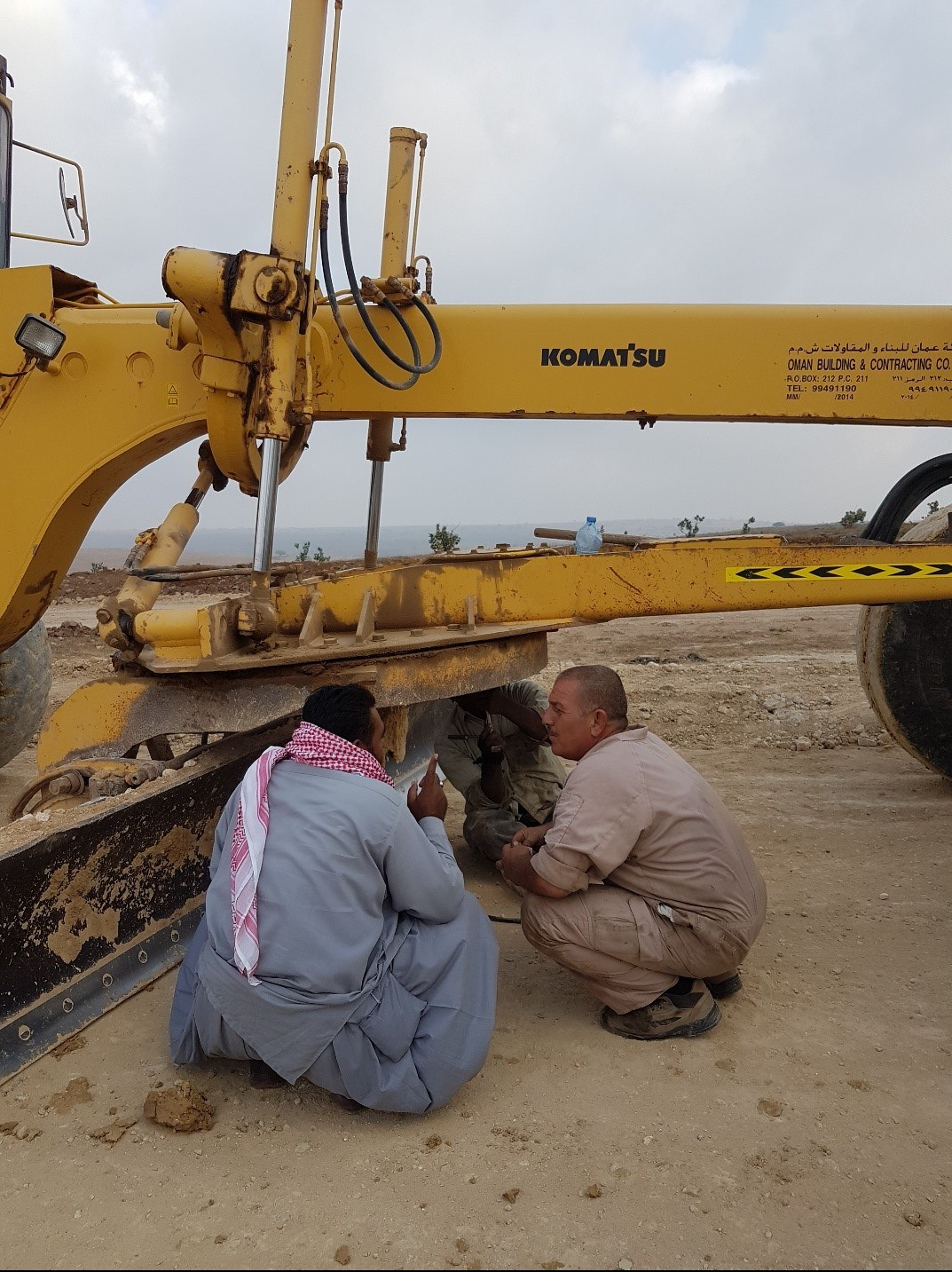
When all else fails, hitchhiking can be a very efficient way to get around and some South Asian expats who do not own their own vehicles do it too. As a male traveler, getting a lift was often very easy. The annoying thing for drivers – and a great thing for hitchhikers – is that there are plenty of speedbumps scattered all over Oman, even on roads where the speed limit is 80km/h! Standing near a speedbump means drivers are forced to slow down, giving them more time to think about whether to pick you up. They might just stop, since they’ve already braked anyway!
While most people have given me a free ride, some private vehicles do expect some form of payment for the lift, so you should clarify before getting in if you’re adamant about not paying. Some good folks have also offered to buy me food and water when I took a lift with them, and they will universally refuse to accept payment from you for the nourishment. As such, bring some small gifts, or have some food with you to share to show gratitude.
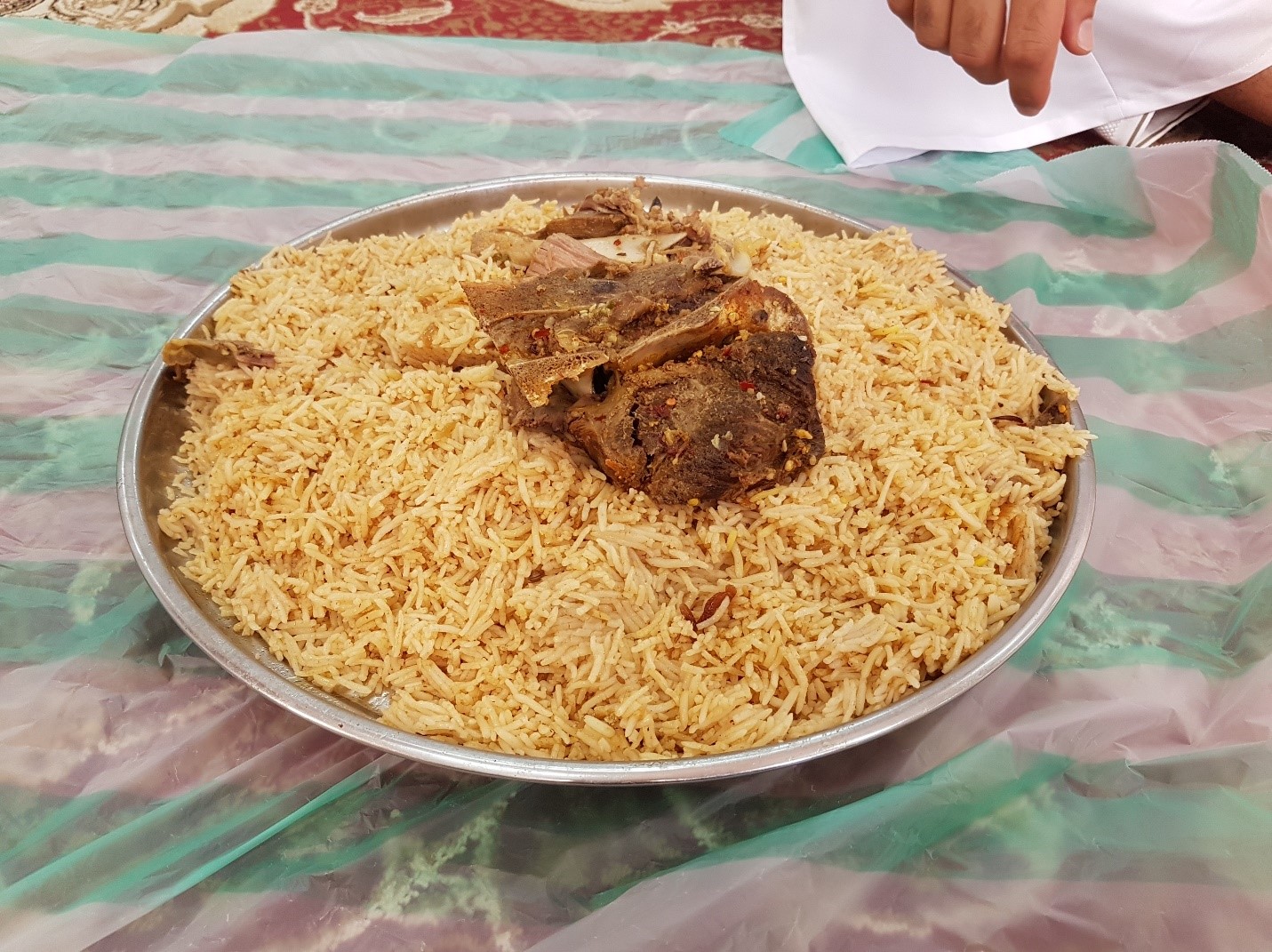
While it never took me very long to get a ride – on average, I wait well under 10 minutes before being able to get a lift, with the longest wait was being about 50 minutes on a small road with most cars going the wrong direction – always budget a bit more time because you never know what might come up. Some drivers might invite you to their homes to have some coffee and dates, or detour for you to see a local attraction in the area.
Getting a lift on weekdays tend to be easier for male travellers like me, when most Omani men are driving by themselves getting to or from work. On weekends – that’s Friday and Saturday in Oman – a lot of cars will be filled by couples or families and it’s more difficult to get a lift.
Female travellers can also consider hitchhiking because a significant minority of drivers in Oman are women and they would probably be very happy to help a female traveler. If a man does stop for a female traveler, make a judgement call as to whether or not you want to get into his vehicle. While hitchhiking in Oman is generally safe, it always entails a certain risk, so always exercise caution when doing so.
Although Omanis are generally very hospitable people, I must emphasize that the above is written from my perspective as an East Asian male traveler. I have witnessed some drivers willing to give me a lift, but not to a South Asian expat also trying to get a ride. While I am very grateful for all the rendered to me while I was there, I must acknowledge my privilege which others might not be able to share because of their skin colour. Whether or not it’s admitted, some Omanis definitely do have a slight prejudice against the South Asians living in their country, and there is a perceptible class hierarchy between the Omanis and the modestly paid South Asian labour force. Hence, the closer your skin tone or facial features are to being South Asian, the harder it might be for you to get a lift.
You Can Do It Too!
Travelling around Oman without a car is very much possible. You’ll probably need some strong legs, a bit of patience, and some luck, but it’s very much doable. Buses and affordable shared taxis would be able to take you to most places, even though that means that sometimes, you’re only dropped along the main road and would have to walk a fair distance to where you want to go. That said, going around Oman without a car is likely to amuse most of the Omanis that you meet along the way. Their curiosity would likely spark some conversation with you, and it really is one of the best ways to make friends and have a memorable trip beyond just the attractions.
Have I missed out anything or did I get anything wrong? Feel free to ask me in the comments, and I’ll try to help you as much as I can.
Travelling without a car can be a very interesting and fun experience, particularly so in Oman. Click HERE to read about the shenanigans I was caught up in on my way to the UNESCO World Heritage site of Al Ayn and HERE for misadventures in Misfat Al Abryeen.
Click HERE for everything you need to know about on public transport in Muscat.
Enjoyed reading my guide to travelling in Oman without a car? Pin it!
